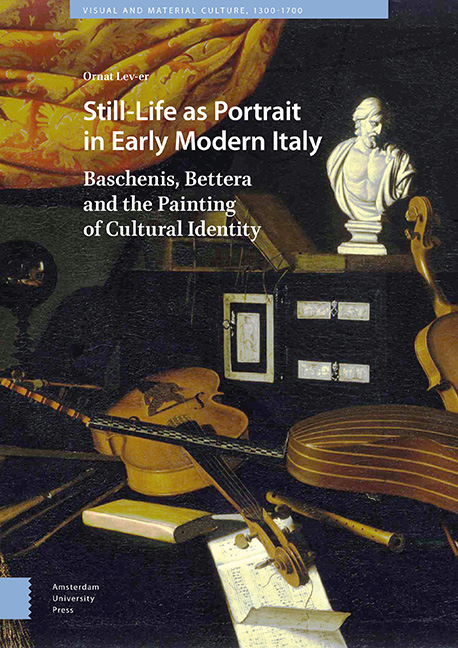 Still-Life as Portrait in Early Modern Italy
Still-Life as Portrait in Early Modern Italy 6 - Paragone: May the Best Art Win
Published online by Cambridge University Press: 23 June 2021
Summary
TheParagone
Competition and rivalry were integral to the lives of Italian artists in the early modern period. The paragone – a form of competition that extended across the borders of cities and artistic schools – revolved around the supremacy of one art medium over another, and especially on a comparison between the respective achievements of painting and sculpture in creating mimetically precise representations of nature. Artists and theorists alike sought to identify aesthetic and thematic qualities in support of their chosen medium, based on their familiarity with both the works of their contemporaries and with sculptures that had survived from antiquity. Artists copied ideas or models out of appreciation or rivalry, and competed for the attention and commissions of the same patrons. This form of rivalry, which was at once personal, theoretical, and philosophical, was also related to the dialectic distinction between disegno (‘linearity’) and colore (‘painterly’). Opposing theoretical approaches to this question were given expression not only in written texts, but also in different genres of painting. These genres engaged with the paragone by means of allegories and personifications, which could not be incorporated into still-life painting. Consequentially, scholars have thus far given no consideration to the question of the paragone in the still-life genre.
Yet, as will be shown in this chapter, the intellectual humanist concept of the paragone was masterfully addressed in Baschenis's and Bettera's still-life paintings, in which the theoretical arguments and cultural, moral, and intellectual ideas concerning the supremacy of one art over another are communicated through a remarkably complex visual and conceptual economy. The innovative nature of these paintings is especially impressive since their compositions formed an arena featuring the competition among the arts upon a still-life ‘support’ devoid of figures, and seemingly also of a narrative. Moreover, added to the traditional participants in this competition – the arts of painting and sculpture – the following chapter will examine the ways in which the two painters from Bergamo further introduced into the debate the fields of music, poetry, literature, and science. Significantly, their paintings also engage with the question of the paragone within each field – comparing, for instance, prestigious and simple musical instruments or different types of representation, ranging from relief to sculpture.
- Type
- Chapter
- Information
- Still-Life as Portrait in Early Modern ItalyBaschenis, Bettera and the Painting of Cultural Identity, pp. 221 - 280Publisher: Amsterdam University PressPrint publication year: 2019


